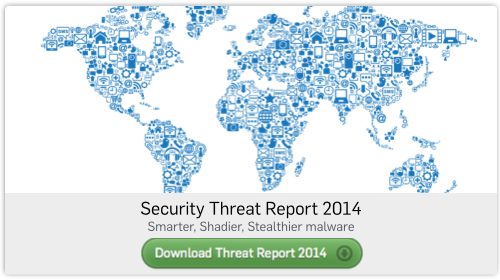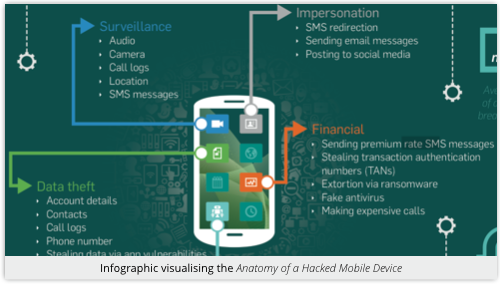EiQ Networks Announces Three New Security Monitoring Tools
Acton, Mass., December 3, 2013 – EiQ Networks a pioneer in continuous security intelligence, today announced the release of three free security intelligence tools – FlowVue, LogVue and EventVue – that will deliver centralized log management, event monitoring and network flow analysis at no cost for up to 25 devices. These new security monitoring and analysis tools will help organizations, with limited security monitoring capabilities, meet specific log management and SIEM use cases to help kick-start an information security program.
“This game changing set of new free security monitoring and analysis tools deliver important capabilities in helping organizations begin building effective security programs.”
“Security monitoring is no longer a nice to have, but is fundamental to build an effective security program,” said Brian Mehlman, Senior Director of Product Management at EiQ Networks. “This game changing set of new free security monitoring and analysis tools deliver important capabilities in helping organizations begin building effective security programs.”
LogVue
Log management is critical to maintaining a secure network and complying with industry regulations. The challenge is to centrally collect, archive and search logs when dealing with distributed and diverse IT assets, all of them generating log data in different formats. LogVue delivers centralized log management and intelligent security search in a simple solution that is easy to install and deploy.
EventVue
IT infrastructure assets produce invaluable data in the form of event logs, but oftentimes organizations have challenges collecting and viewing the data in meaningful ways when dealing with a large number of devices and disparate information in different formats. EventVue is an easy to use centralized log viewing solution that displays events in real-time dashboards that help users optimize network infrastructure and react to potential security threats.
FlowVue
Network flow data can be extremely valuable for both IT network administration and information security purposes. FlowVue, a network flow analyzer, monitors and analyzes flow data and helps identify policy violations, security threats, usage patterns and provides valuable insight for network optimization.
To receive a free copy, simply download and install FlowVue, LogVue or EventVue from: www.eiqnetworks.com/free-tools
“Organizations continue to rely on discrete point tools, under-staffed organizations, and manual processes as the basis of their security defenses,” said Jon Oltsik, senior principal analyst at Enterprise Strategy Group. “People, process and technology are fundamental components for an effective security program and it’s imperative that companies adopt solutions that address these new enterprise security requirements.”
Recently EiQ Networks announced the release of the SecureVue Continuous Security Intelligence Platform, enabling a broad range of continuous security and compliance monitoring solutions for any security conscious organization. This new offering delivers multiple add-on modules that include log management SIEM, SANS Critical Security Control (CSC) based cyber defense assessment, and automated security configuration audit.
The SecureVue platform along with these new free security tools are part of EiQ Networks commitment to help any organization start or complete their journey towards building an effective security program while overcoming challenges around traditional SIEM and log management acquisition, operational complexities and trained cyber security professional shortages. To learn more about EiQ Networks and its offerings, please visit: www.eiqnetworks.com
About EiQ Networks:
EiQ Networks, a pioneer in simplified information security and compliance solutions and services, is transforming how organizations identify threats, mitigate risks and enable compliance. Our flagship solution, SecureVue, a continuous security intelligence platform, helps organizations proactively detects incidents, implement security best practices, and receive timely and actionable intelligence along with remediation guidance. Through a single console, SecureVue enables a unified view of an organization’s entire IT infrastructure for continuous security monitoring, critical security control assessment, configuration auditing, and compliance automation. In addition, EiQ offers SOCVue, a security monitoring software as a service (SaaS) offering, provides 24×7 security operations to organizations that require security monitoring but lack resources or on-staff expertise to implement an effective security program.
For more information, visit: http://www.eiqnetworks.com.
Article source: http://www.darkreading.com/management/eiq-networks-announces-three-new-securit/240164673
 A 38-year-old man from the US state of Wisconsin has been sentenced to two years of federal probation and will pay a $183,000 fine for taking part in a
A 38-year-old man from the US state of Wisconsin has been sentenced to two years of federal probation and will pay a $183,000 fine for taking part in a 


 Last Thursday, Twitter announced the global availability of
Last Thursday, Twitter announced the global availability of 
 As with tailored audiences, Twitter will also disable tailored suggestions if you have Do Not Track enabled in your browser.
As with tailored audiences, Twitter will also disable tailored suggestions if you have Do Not Track enabled in your browser. You know how a military guy with a
You know how a military guy with a  So to sum it up, nuclear Armageddon originating in the most heavily-armed regime on the planet was an easily guessed password, written down.
So to sum it up, nuclear Armageddon originating in the most heavily-armed regime on the planet was an easily guessed password, written down.  A 27-year-old man based in San Diego, California, faces prison after being
A 27-year-old man based in San Diego, California, faces prison after being